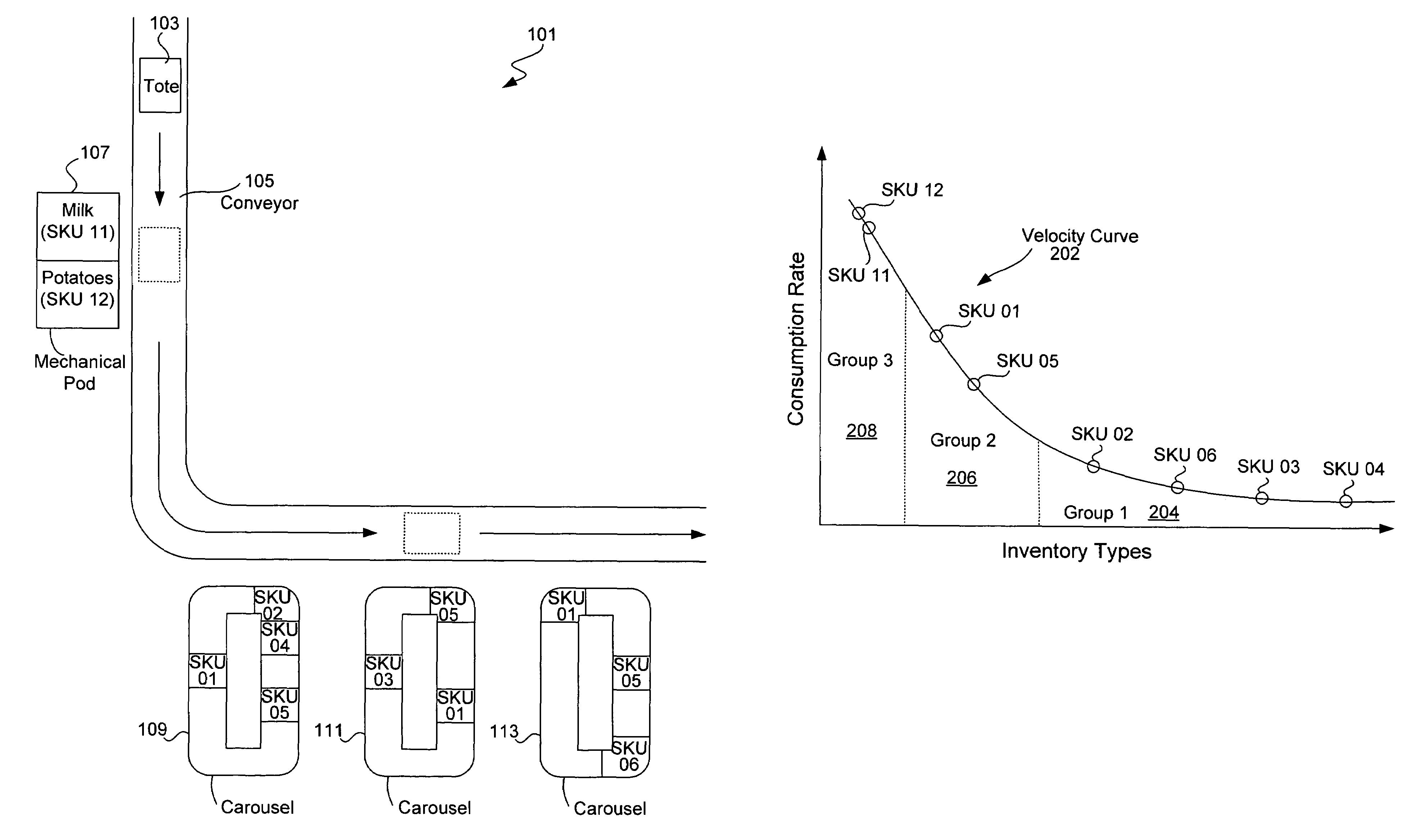Inventory replication based upon order fulfillment rates
a technology of inventory replication and fulfillment rate, applied in the field of distribution center load balancing, can solve the problems of high throughput, rapid drop in throughput, and wide variation of different orders, and achieve the effect of reducing the number of orders, and increasing the number of orders
- Summary
- Abstract
- Description
- Claims
- Application Information
AI Technical Summary
Benefits of technology
Problems solved by technology
Method used
Image
Examples
Embodiment Construction
[0024]The following discussion presents some terms and concepts pertinent to the operation of a distribution center. The invention is not specifically limited to the examples described hereafter.
[0025]Totes are storage containers used to hold products for transportation to the consumer. There may be several different sizes of totes. Additionally, some totes may be designed for holding frozen and refrigerated goods. In some embodiments, the totes are relatively sturdy and have closable lids.
[0026]Each tote may have an identifier to support automated movement through the distribution center by conveyor. For example, each tote can have a bar code identifier that can be scanned as it moves past various points in the system. In this manner, a tote can be moved from a tote induction area to a specific pod or other location with the system tracking the location of the tote.
[0027]As indicated, a distribution center has a transport system such as a conveyor that moves totes and trays to pods...
PUM
 Login to View More
Login to View More Abstract
Description
Claims
Application Information
 Login to View More
Login to View More - R&D
- Intellectual Property
- Life Sciences
- Materials
- Tech Scout
- Unparalleled Data Quality
- Higher Quality Content
- 60% Fewer Hallucinations
Browse by: Latest US Patents, China's latest patents, Technical Efficacy Thesaurus, Application Domain, Technology Topic, Popular Technical Reports.
© 2025 PatSnap. All rights reserved.Legal|Privacy policy|Modern Slavery Act Transparency Statement|Sitemap|About US| Contact US: help@patsnap.com



